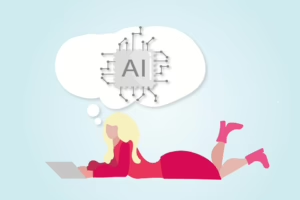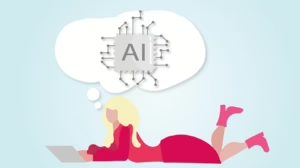The Meaning of AI: Navigating the Complex Landscape of Artificial Intelligence
Introduction
Artificial Intelligence (AI) has become one of the defining technologies of the 21st century, impacting various aspects of human life, from healthcare to finance, and from education to entertainment. Understanding AI’s meaning requires a multifaceted approach, as it encompasses not only technical aspects but also ethical and philosophical implications. This article seeks to unpack the complex landscape of AI, addressing its definitions, types, applications, challenges, and broader social implications.
Defining AI
AI can be broadly defined as the simulation of human intelligence in machines that are programmed to think and learn like humans. The term encompasses a wide range of technologies, including machine learning, natural language processing, and robotics. However, the precise definition of AI is often debated, as advancements in the field frequently challenge existing boundaries and categorizations.
Types of AI
AI is commonly divided into two categories: narrow AI and general AI.
-
Narrow AI: Also called weak AI, narrow AI is designed to perform a specific task, such as facial recognition, language translation, or game playing. Most current AI applications fall into this category.
-
General AI: Also referred to as strong AI, general AI aims to understand and reason about the world in a manner indistinguishable from human intelligence. This form of AI remains largely theoretical, with significant barriers to realization.
Historical Context
The origin of AI dates back to the mid-20th century, with seminal work from scientists like Alan Turing and John McCarthy. Turing’s foundational work on algorithmic computation and his advocacy for machines capable of intelligent behavior laid the groundwork for modern AI. In 1956, the Dartmouth Conference marked the birth of AI as a field of study, where researchers convened to discuss the future of machines that could simulate human thought.
In the following decades, progress in AI ebbed and flowed, experiencing periods of optimism and significant funding, as well as disillusionment and funding cuts—often referred to as “AI winters.” Key milestones, such as IBM’s Deep Blue defeating chess champion Garry Kasparov in 1997 and the emergence of machine learning techniques in the 2010s, have shaped the trajectory of AI development.
How AI Works
At its core, AI relies on data and algorithms to make predictions or decisions based on patterns and information. The technical underpinnings of AI include:
-
Data: AI systems require vast amounts of data for training. This data can include anything from text and images to transactions and sensor readings.
-
Machine Learning: A subset of AI, machine learning allows systems to improve over time without being explicitly programmed. Techniques such as supervised learning, unsupervised learning, and reinforcement learning are employed to train models.
-
Neural Networks: Inspired by the human brain, neural networks are computational models that can learn complex relationships in data. Deep learning, a subset of machine learning, uses multi-layered neural networks to process large volumes of data.
Applications of AI
AI technologies permeate various sectors, transforming the way businesses operate and individuals interact with technology. Some key applications include:
Healthcare
AI is rapidly transforming healthcare through applications like predictive analytics, diagnostic imaging, and personalized medicine. For example, algorithms can analyze medical images to detect anomalies, leading to earlier diagnoses and improved patient outcomes. AI-driven tools are also being developed to assist in drug discovery and clinical decision-making.
Finance
In the finance sector, AI algorithms are deployed for fraud detection, algorithmic trading, and risk management. By analyzing transaction patterns, AI can identify unusual activities that may indicate fraud, while machine learning models predict stock price movements with greater accuracy.
Transportation
The advent of autonomous vehicles showcases AI’s potential in transportation. Companies like Tesla and Waymo are employing AI systems to create self-driving cars that can navigate and respond to complex driving scenarios. AI is also used in logistics for route optimization and fleet management.
Entertainment
AI influences the entertainment industry by driving recommendation algorithms, content generation, and even creating new forms of artistic expression. Services like Netflix and Spotify utilize AI to recommend content tailored to individual preferences, while AI-generated art and music are pushing the boundaries of creativity.
Education
In education, AI is being leveraged for personalized learning experiences. Adaptive learning platforms can analyze students’ strengths and weaknesses, allowing them to receive tailored educational content that meets their unique needs.
Ethical Considerations
While AI offers numerous benefits, it raises significant ethical concerns. The implications of AI extend beyond technology, prompting discussions on fairness, accountability, and transparency.
Bias and Discrimination
AI systems can perpetuate existing biases if trained on skewed data sets. For instance, facial recognition technology has been criticized for its inaccuracies and higher error rates when identifying individuals from minority groups. Addressing bias in AI requires constant vigilance and a commitment to developing fair algorithms.
Privacy Concerns
AI systems often require access to personal data, leading to privacy concerns. Striking a balance between leveraging data for AI applications and respecting individuals’ privacy rights remains a critical challenge. Regulatory frameworks, such as the General Data Protection Regulation (GDPR), aim to protect individuals’ data while fostering innovation.
Accountability and Transparency
As AI systems make increasingly autonomous decisions, questions regarding accountability arise. Who should be held responsible when an AI system causes harm? Ensuring transparency in AI algorithms can help hold developers and users accountable, enabling external audits and assessments of AI systems’ performance.
The Future of AI
The future of AI is a topic of intense debate and speculation. As technology progresses, several trends are likely to shape AI’s trajectory:
-
Human-AI Collaboration: Rather than replacing humans, future AI systems may enhance human capabilities. Collaboration between humans and AI can lead to improved decision-making and more efficient workflows.
-
Regulatory Frameworks: As AI technologies mature, regulatory frameworks will evolve to address ethical concerns and ensure responsible use. Policymakers will need to navigate the complexities of fostering innovation while protecting public interests.
-
Interdisciplinary Approaches: Growing awareness of the ethical implications of AI will drive interdisciplinary collaborations among technologists, ethicists, and policymakers. A holistic approach to AI development may help mitigate risks and maximize benefits.
-
Continued Research: The field of AI will continue to witness rapid advancements, particularly in areas such as natural language processing, computer vision, and robotics. Ongoing research will drive innovation and push the boundaries of what AI can achieve.
-
Global Implications: As AI technology spreads globally, disparities in access and capability may exacerbate existing inequalities. Collaborative efforts will be essential to ensure that the benefits of AI are equitably distributed.
Conclusion
The meaning of AI encompasses a complex interplay of technological, ethical, and societal factors. As we navigate this evolving landscape, it is crucial to maintain a balanced perspective that recognizes both the transformative potential of AI and its associated challenges. By investing in responsible AI development, fostering interdisciplinary collaborations, and implementing effective regulations, society can harness the power of AI to improve lives and drive progress across multiple domains.
References
- Russell, S., & Norvig, P. (2020). Artificial Intelligence: A Modern Approach. Pearson.
- Turing, A. M. (1950). Computing Machinery and Intelligence. Mind, LXIX(236), 433-460.
- Binns, R. (2018). Fairness in Machine Learning: Lessons from Political Philosophy. In Proceedings of the 2018 Conference on Fairness, Accountability, and Transparency (FAT* ’18).
- European Commission. (2018). General Data Protection Regulation (GDPR).
- Amodei, D., & Hernande-Confino, M. (2018). AI and Compute. OpenAI.
- Brynjolfsson, E., & McAfee, A. (2014). The Second Machine Age: Work, Progress, and Prosperity in a Time of Brilliant Technologies. W.W. Norton & Company.


























Add Comment